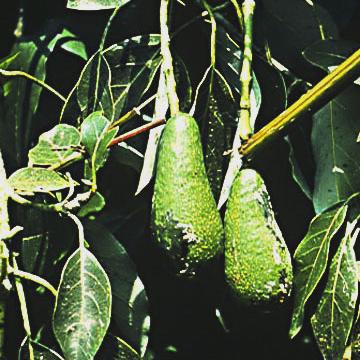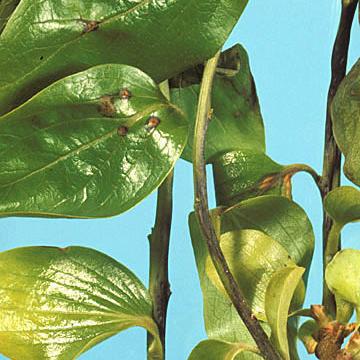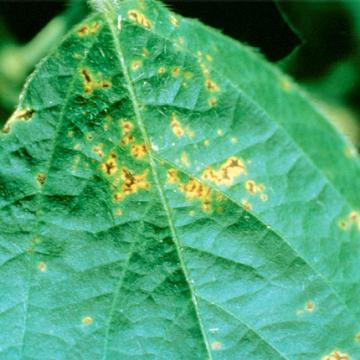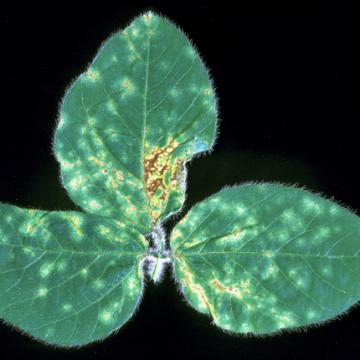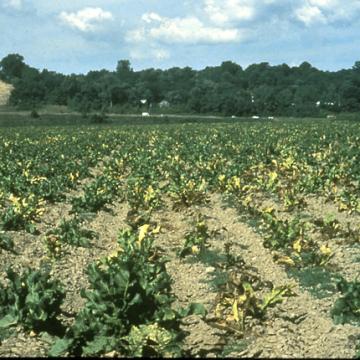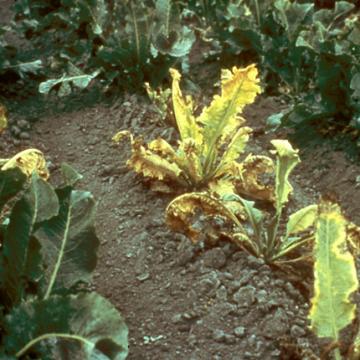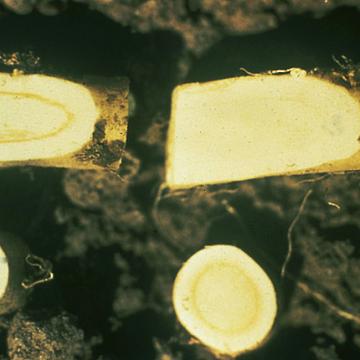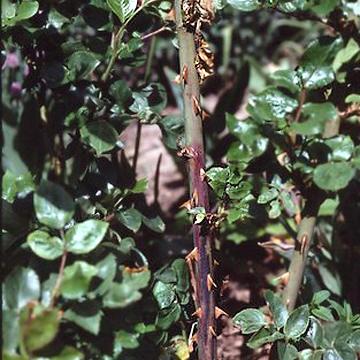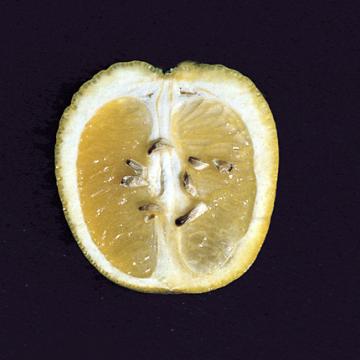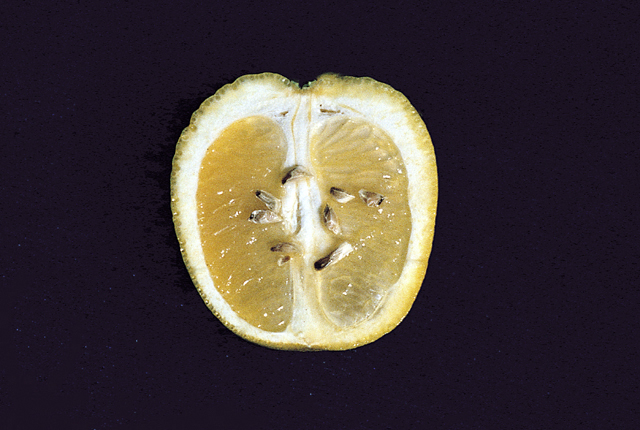DISEASE: Bacterial blast and fruit spot
HOST: Avocado
White bacterial ooze on surface of fruit. Pseudomonas strains that cause canker likely differ from those that infect fruit and leaves.
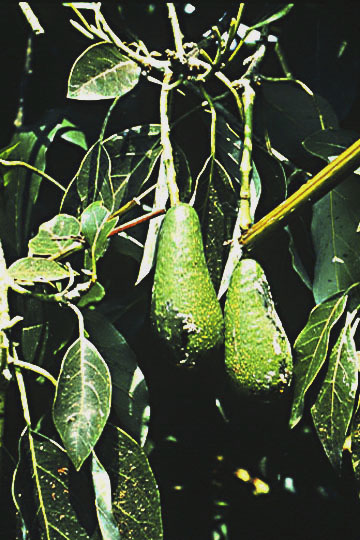
Bacterial blast and fruit spot | Avocado
DISEASE: Bacterial blast and fruit spot
HOST: Avocado (Persea americana)
PATHOGEN: Pseudomonas syringae
SOURCE: L. Fucikovsky
DISEASE: Bacterial blight
HOST: Persimmon
Diseased shoots with spots on leaves and necroses on stems.
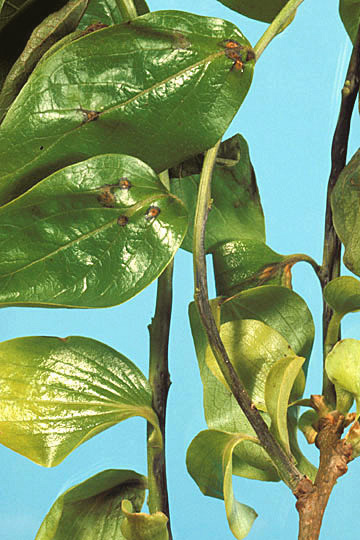
Bacterial blight | Persimmon
DISEASE: Bacterial blight
HOST: Persimmon (Diospyros sp.)
PATHOGEN: Pseudomonas syringae
SOURCE: J. Young
DISEASE: Bacterial blight
HOST: Soybean
Leaves with yellowish brown necrotic lesions. Lesions also may be yellow to light brown and bordered by yellowish green halos. Lesions occur on stems, petioles, and pods.
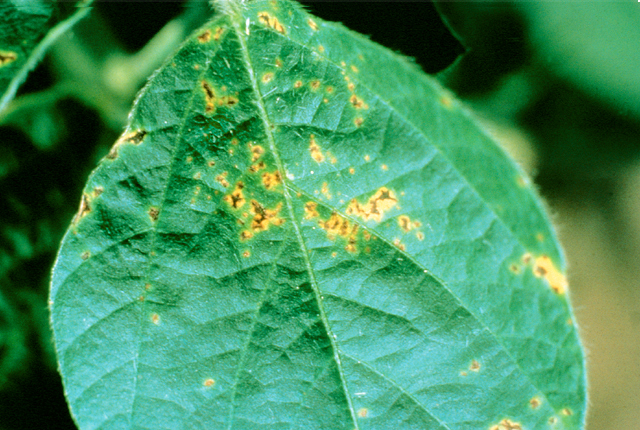
Bacterial blight | Soybean
DISEASE: Bacterial blight
HOST: Soybean (Glycine max)
PATHOGEN: Pseudomonas syringae pv. glycinea
SOURCE: J. B. Sinclair
DISEASE: Bacterial leaf spot
HOST: Soybean
Early symptoms of bacterial blight.
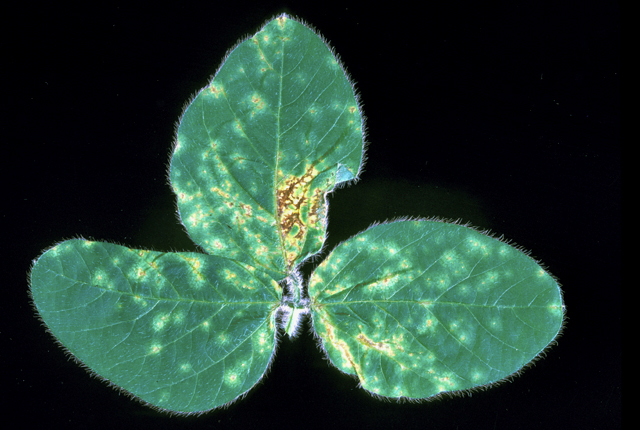
Bacterial leaf spot | Soybean
DISEASE: Bacterial leaf spot
HOST: Soybean (Glycine max)
PATHOGEN: Pseudomonas syringae pv. glycinea
SOURCE: D. Cupples
DISEASE: Brittle root
HOST: Horseradish
Dying, stunted, yellow to brown horseradish plants.
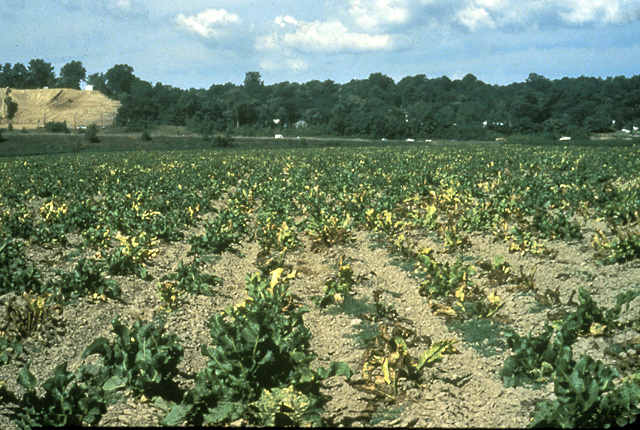
Brittle root | Horseradish
DISEASE: Brittle root
HOST: Horseradish (Armoracia rusticana)
PATHOGEN: Spiroplasma citri
SOURCE: C. Eastman, M. Davis
DISEASE: Brittle root
HOST: Horseradish
Close-up of stunted, yellow horseradish plants.
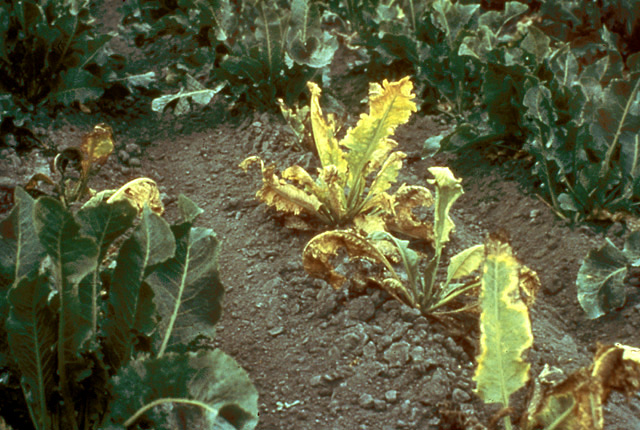
Brittle root | Horseradish
DISEASE: Brittle root
HOST: Horseradish (Armoracia rusticana)
PATHOGEN: Spiroplasma citri
SOURCE: D. Sherrod
DISEASE: Brittle root
HOST: Horseradish
Horseradish with discolored internal tissues. Healthy root segment (top right).
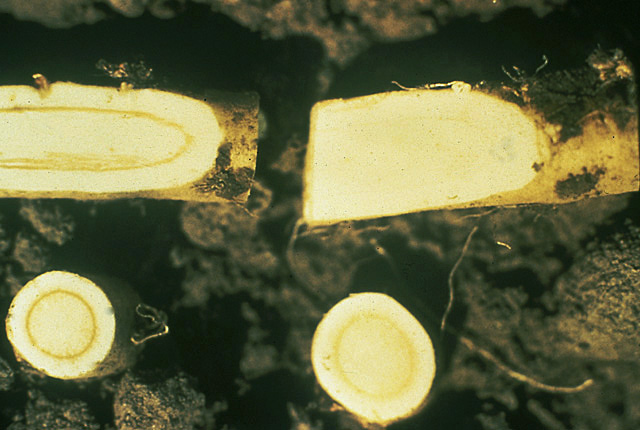
Brittle root | Horseradish
DISEASE: Brittle root
HOST: Horseradish (Armoracia rusticana)
PATHOGEN: Spiroplasma citri
SOURCE: J. Fletcher, M. Davis
DISEASE: Cane blight
HOST: Rose
Rose with blighted necrotic cane.
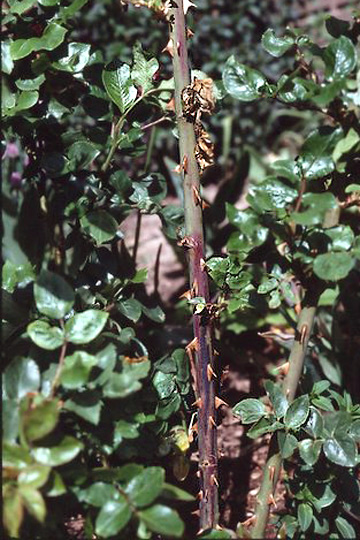
Cane blight | Rose
DISEASE: Cane blight
HOST: Rose (Rosa sp.)
PATHOGEN: Pseudomonas syringae
SOURCE: S. Mohan


